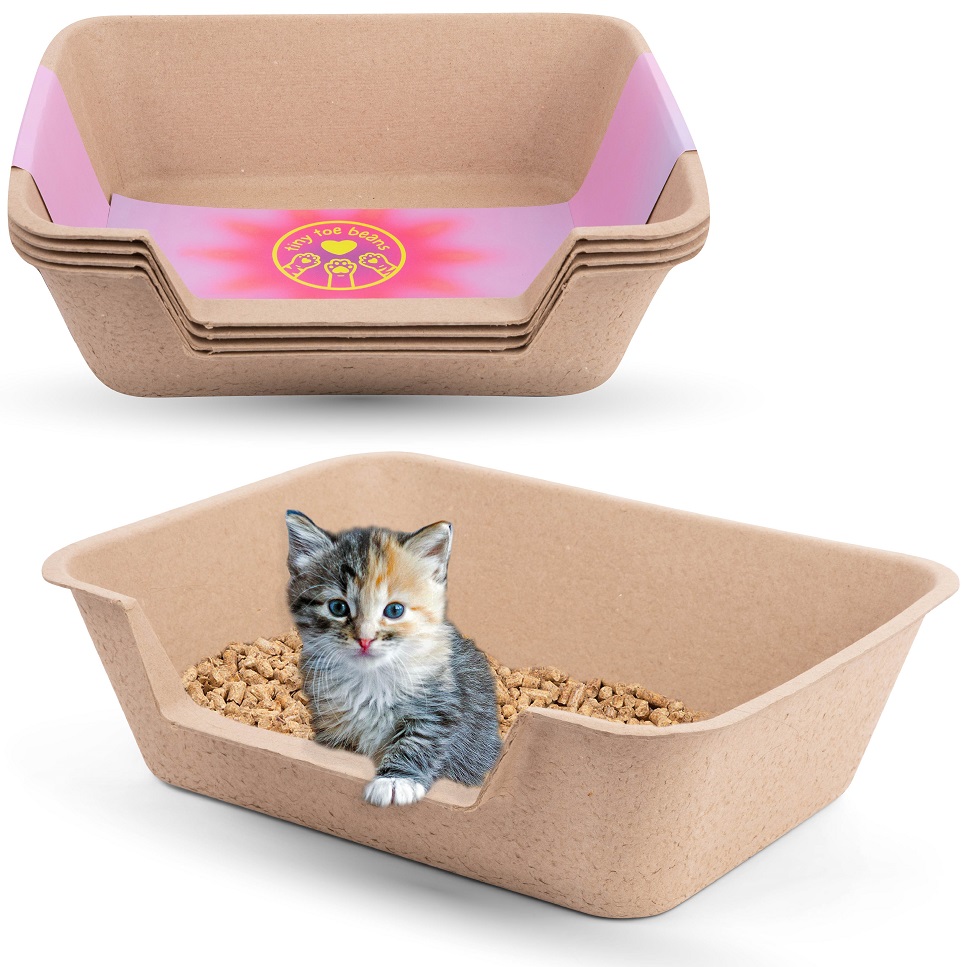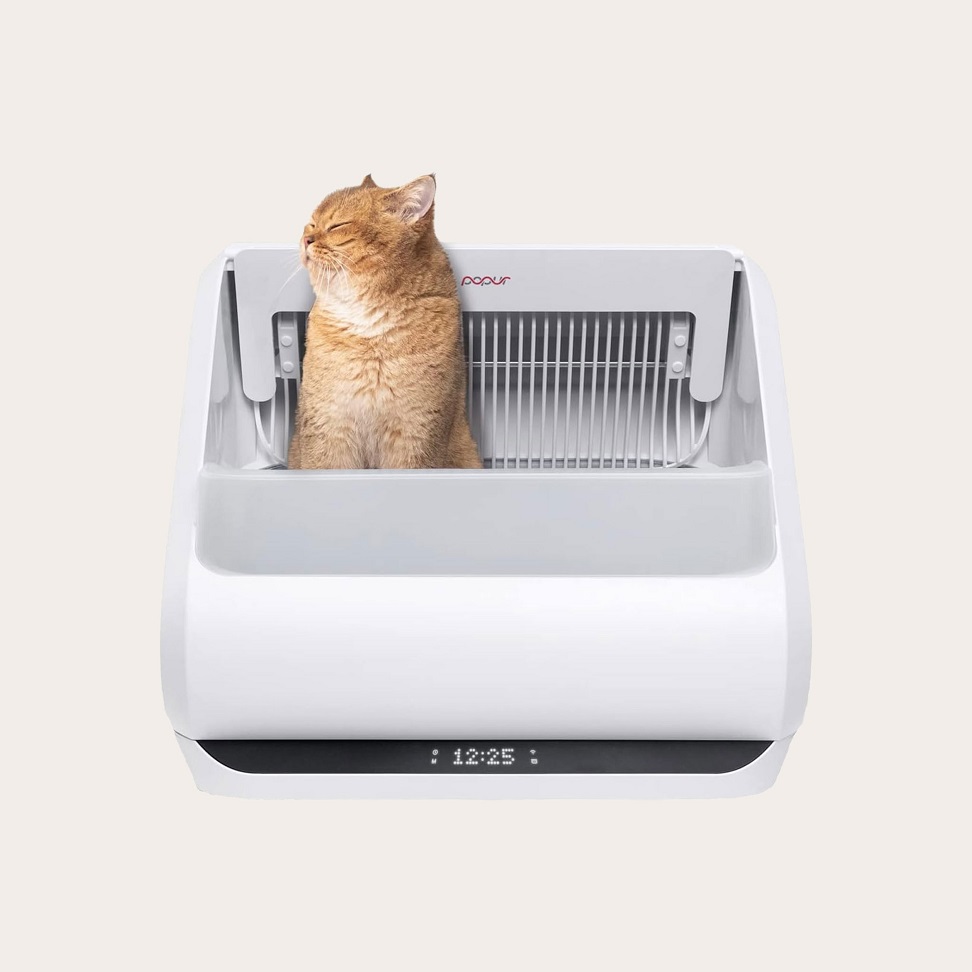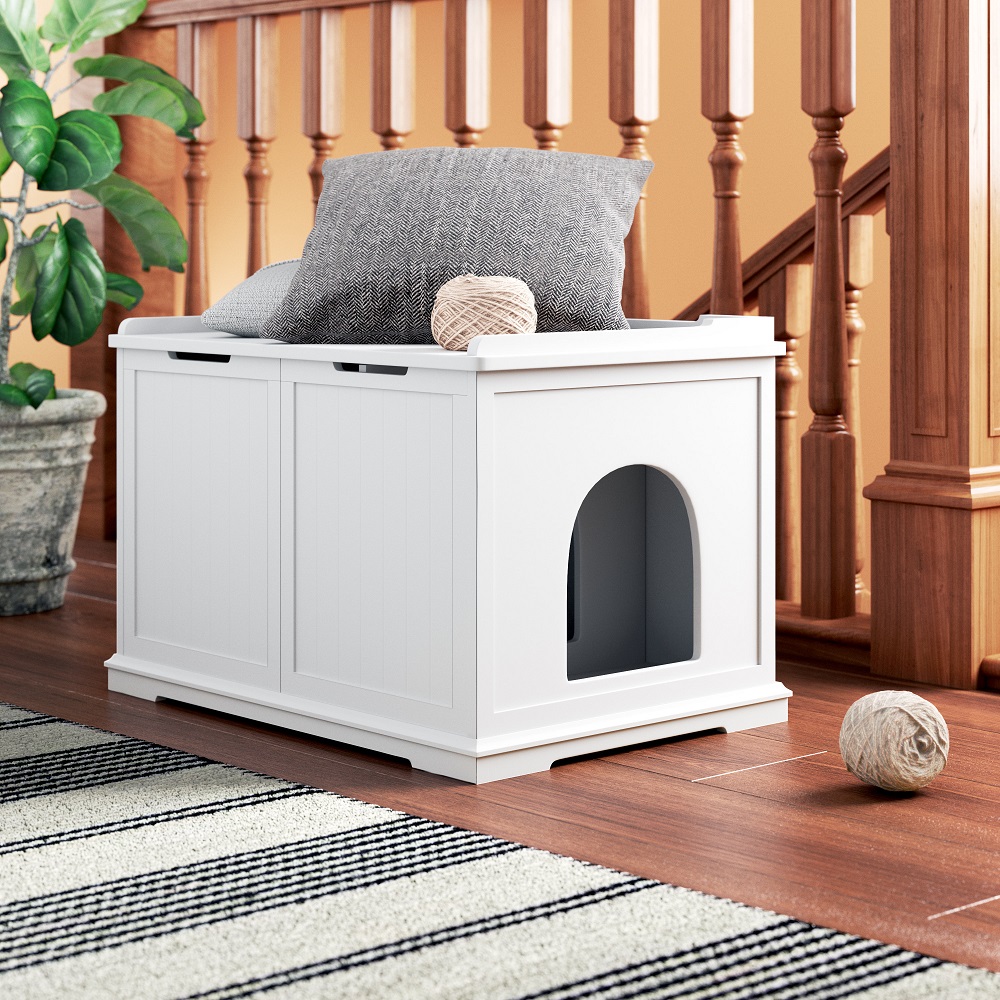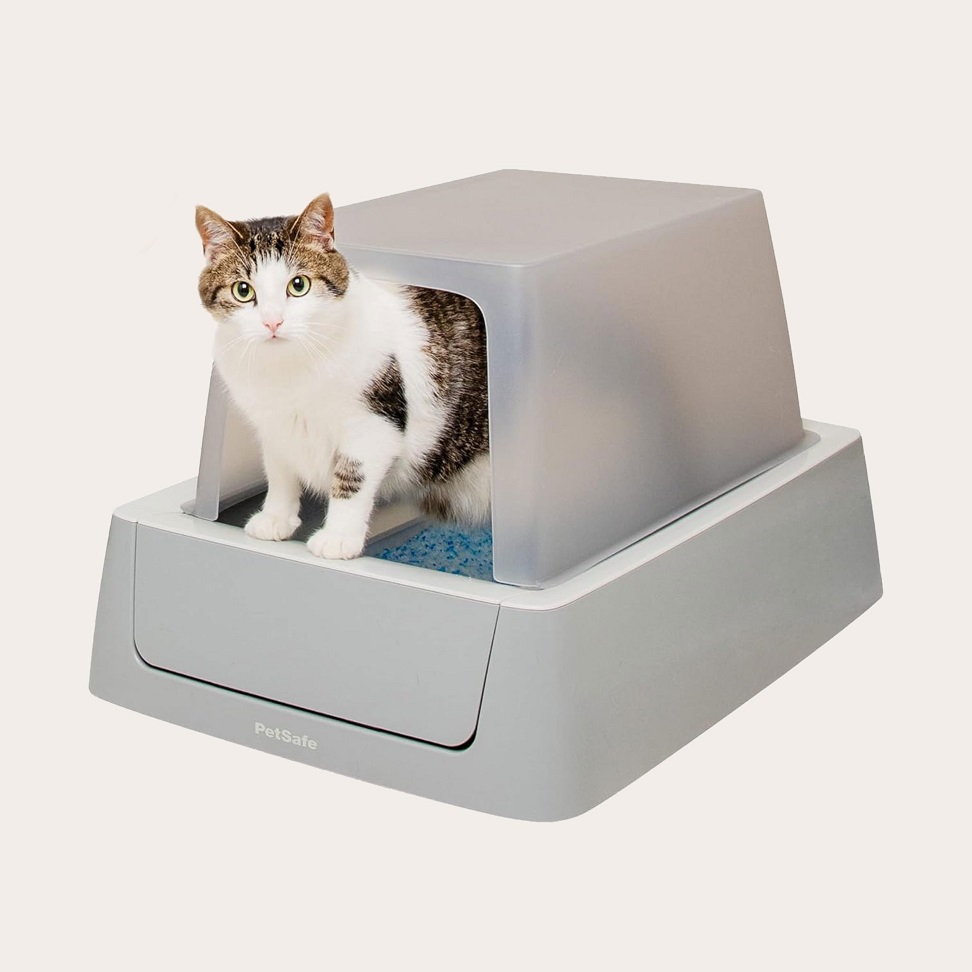Common Reasons for Litter Box Issues
Cats not pooping in their litter box can confuse and worry owners. It may happen for many reasons. Understanding them helps solve the problem. Here are some common causes for litter box issues:
- Medical Issues: Cats may avoid the litter box due to pain or discomfort. Conditions like urinary tract infections or arthritis can impact their habits.
- Dirty Litter Boxes: Cats prefer clean areas to relieve themselves. A dirty box might make them look elsewhere.
- Wrong Litter Type: Cats are picky with litter textures and smells. Unliked litter can lead to floor pooping.
- Litter Box Location: A box placed in a noisy or high-traffic area may stress cats out.
- Not Enough Boxes: One litter box per cat plus one is the rule. Fewer boxes can cause issues.
- Behavioral Causes: Stress, anxiety, or changes can lead to irregular bathroom habits. Cats need a calm environment.
- Negative Associations: If pooping in the box caused pain before, cats might avoid it now.
- Territorial Marking: This is more common in unneutered males, but females and neutered males can do it too.
Recognizing these issues is the first step to helping your cat use the litter box correctly.

Steps to Address Medical Concerns
Addressing medical concerns is key when cats poop on the floor but not in their litter box. Start with these steps:
- Visit Your Vet: Book an appointment to rule out health issues. Conditions like arthritis or urinary infections can cause litter box avoidance.
- Pain Management: If your cat is in pain, your vet may suggest medication. This can make the litter box less daunting.
- Monitor Health: Keep an eye on symptoms. Frequent peeing, blood in urine, or straining are alarming signs. They require immediate vet care.
- Diet Adjustments: Ask your vet about diet changes. Some health problems improve with specific foods.
- Hydration Focus: Ensure your cat drinks enough. Good hydration can prevent urinary problems.
- Regular Check-ups: Schedule check-ups to catch issues early. This helps avoid litter box mishaps.
Immediate vet care can identify and manage health problems. Once addressed, your cat may return to normal litter box use.
Environmental Factors and Litter Box Placement
Choosing the right spot for a litter box is crucial. Your cat needs a quiet, safe place to go. Avoid placing the box near noisy appliances or high-traffic areas. Cats value privacy just as humans do.
- Quiet Location: Pick a calm area where your cat won’t be disturbed.
- Accessibility: Ensure your cat can easily reach the litter box at any time.
- Distance from Food: Never place litter boxes near food or water. Cats dislike this.
- Multiple Locations: If you have a big home, place boxes in different areas. This helps prevent accidents.
- Avoid Territorial Conflicts: For homes with multiple cats, spread boxes out. This reduces fighting over box use.
- Sight Lines: Cats prefer spots where they can see around them. It makes them feel secure.
- Consistency: Keep the box in the same place. Cats rely on routine.
By considering these factors, you can improve litter box use and prevent floor pooping.
The Role of Litter Box Maintenance
Maintaining your cat’s litter box is key to encouraging proper use. Consider these points:
- Regular Cleaning: Scoop the box daily. Cats dislike using dirty boxes.
- Full Wash: Once a month, empty and scrub the box. Refill with fresh litter.
- Enzyme Cleaners: Remove odors thoroughly. Odor removers discourage cats from going outside the box.
- Choice of Scoop: Use a metal scoop for easier cleaning. It’s more durable.
- Disposable Liners: They can simplify clean-up. But some cats dislike them.
- Litter Depth: Maintain 2-3 inches of litter. It’s ideal for digging and covering.
Proper maintenance helps prevent your cat from pooping on the floor. It invites them to a clean, comfortable space.
Litter Types and Your Cat’s Preferences
Cats often pick a favorite litter type based on many factors. Texture, scent, and how it feels under their paws all matter. Here are some insights into how litter preferences can affect litter box use:
- Texture Sensitivity: Some cats prefer finer, sand-like litters; others want coarser, granular types. Observing your cat’s reaction can guide you to the right choice.
- Scent Issues: Cats have strong noses. They may shun heavily scented litters. Try unscented options if your cat avoids the box after a litter change.
- Dust Concerns: Dusty litter can bother cats, especially those with respiratory issues. Low-dust or dust-free litters might be the solution.
- Biodegradable Options: Eco-friendly litters made from recycled paper, wood, or corn offer a different texture. They sometimes attract picky cats.
- Clumping vs. Non-Clumping: Some cats have a strong preference. Clumping litter is easy to clean, but some cats prefer non-clumping types for its feel.
- Trial and Error: Test different litters in separate boxes. See which one your cat uses more. It’s a simple way to identify their preference.
Change can upset cats. If your cat starts pooping on the floor, revert to the old litter. Consider mixing new litter slowly with the old type to ease transitions.
By understanding and catering to your cat’s litter preferences, you may solve the frustrating mystery of why they’re pooping on the floor. Keep experimenting until you find a litter that your cat loves.
The Importance of Multiple Litter Boxes
Cats need options for their bathroom habits. Here’s why multiple litter boxes are crucial:
- Prevents Overcrowding: With more than one cat, a single box gets dirty faster. This leads to accidents.
- Reduces Stress: Cats get their own space. No competition for the litter box means less stress and healthier habits.
- Better Hygiene: Frequent cleaning is easier with multiple boxes. Cats appreciate the cleanliness.
- Convenience: Multiple boxes mean a cat is never too far from a bathroom option. This is especially true for older or mobility-challenged cats.
- Prevents Negative Associations: If bad experiences happen in one box, another is available. This helps avoid long-term litter box avoidance.
- Territorial Harmony: Each cat may claim a box, preventing territorial disputes. Peaceful cohabitation means no floor pooping.
- Suit Different Preferences: Cats may prefer certain box locations or litter types. Having multiple boxes caters to these preferences.
- Detect Health Issues: With separate boxes, it’s easier to monitor each cat’s elimination patterns. This can help spot health problems early.
Considering these factors, the ‘one plus one’ rule is key. One box per cat, plus one extra, keeps everyone happy. Encourage use of all boxes by placing them in different, quiet locations throughout your home. Regular cleaning is also a must for each box to keep them inviting. Offering multiple litter boxes is a simple step that can lead to big improvements in your cat’s bathroom behavior.
Behavioral Insights and Stress-Related Causes
Understanding your cat’s behavior is essential when they avoid the litter box. Cats can feel stressed or anxious, and this affects their toilet habits. Here are insights into behavioral and stress-related causes:
- Stress at Home: Changes like moving house, new pets, or loud noises can unsettle cats.
- Anxiety Issues: Cats may feel threatened by other animals or changes in their environment.
- Negative Experiences: Past pain while using the box may lead to floor pooping.
- Routine Changes: Cats thrive on routine. Any disruption can cause stress and avoidance.
- Lack of Privacy: Without a quiet, private spot, cats may feel too exposed to use the box.
- Limiting Territorial Behavior: In multi-cat homes, ensure each cat has its own space. This reduces competition and stress.
- Play and Exercise: Regular play helps reduce stress and improve your cat’s mood.
- Stress Reduction Tools: Consider using feline pheromone diffusers to help calm your cat.
- Safe Spaces: Cats need a place to retreat when they feel overwhelmed. Provide quiet spots away from the litter box.
By recognizing and addressing these behavioral issues, you can help your cat feel secure. A happy cat is more likely to use the litter box properly.
Advanced Solutions and When to Seek Professional Help
When simple fixes don’t work for your cat’s litter box issues, consider advanced solutions. Sometimes, professional help is needed. Here’s what to do next:
- Behavioral Specialist: Seek a cat behavioral expert. They can provide targeted strategies for litter box training.
- Environmental Enrichment: Increase your cat’s curiosity with toys and perches. It can reduce stress and improve litter habits.
- Feliway Diffusers: These mimic calming cat pheromones. They can help ease anxiety and encourage litter box use.
- Litter Box Furniture: Some cats prefer hidden litter areas. Furniture can offer privacy and blend with home decor.
- Litter Attractants: Add attractants to litter. These can tempt your cat back to the box.
- Medical Second Opinion: If problems persist, consult another vet. They may spot overlooked health issues.
- Thorough Cleanup: Use enzymatic cleaners for accidents outside the box. It prevents lingering odors that attract cats back.
- Timed Feeders: Consistent feeding times can create a routine. A routine helps regulate bathroom habits.
If you’ve tried everything but your cat still poops on the floor, don’t delay seeking expert help. It’s crucial for your cat’s health and your sanity. Remember, proper guidance can resolve even the most stubborn litter box problems.





